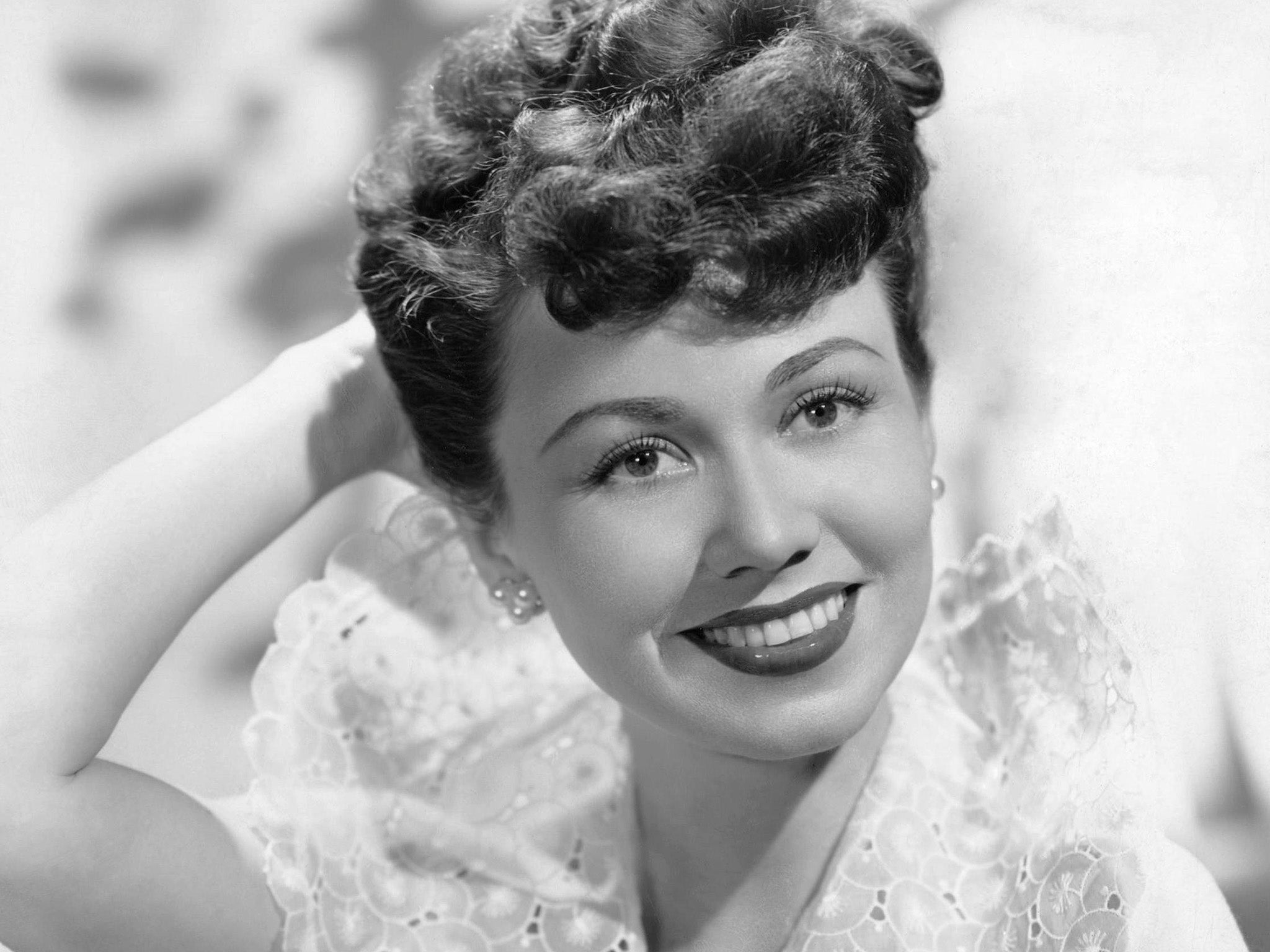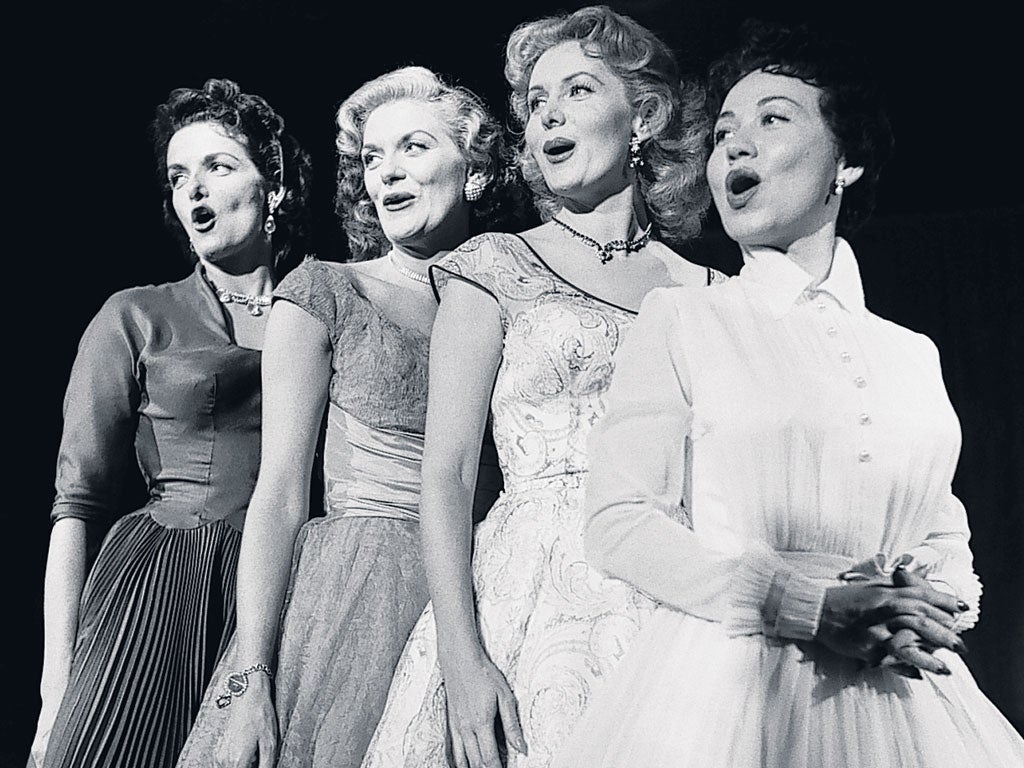A Life in Focus: Connie Haines, singing prodigy with career spanning decades, known for bust-ups with Sinatra
The Independent revisits the life of a notable figure. This week: Connie Haines, from 1 October 2008

Your support helps us to tell the story
From reproductive rights to climate change to Big Tech, The Independent is on the ground when the story is developing. Whether it's investigating the financials of Elon Musk's pro-Trump PAC or producing our latest documentary, 'The A Word', which shines a light on the American women fighting for reproductive rights, we know how important it is to parse out the facts from the messaging.
At such a critical moment in US history, we need reporters on the ground. Your donation allows us to keep sending journalists to speak to both sides of the story.
The Independent is trusted by Americans across the entire political spectrum. And unlike many other quality news outlets, we choose not to lock Americans out of our reporting and analysis with paywalls. We believe quality journalism should be available to everyone, paid for by those who can afford it.
Your support makes all the difference.In the history of American popular music popular music there have been few better judges of talent than the trombonist Tommy Dorsey. At its peak in the early 1940s, his band featured the musicians Bunny Berigan, Buddy Rich and Joe Bushkin as well as the vocalists Frank Sinatra, Jo Stafford and Connie Haines.
Unfortunately, the egos were so immense, especially those of Rich and Sinatra, that backstage arguments were frequent.
Although Haines and Sinatra often sang romantic duets, Haines would direct her lines to a handsome Gl in the audience, delighting the crowds but agitating Sinatra. At one point, Sinatra told the equally bad tempered Dorsey to fire her, and Dorsey responded by sacking Sinatra instead. The little-known Milburn Stone, later Doc Adams in the TV series Gunsmoke, took his place until Sinatra, totally out of character, apologised and returned.

Connie Haines was born Yvonne Marie Antoinette JaMais in 1921 in Savannah, Georgia, but was raised in Jacksonville, Florida after her parents separated. Her mother taught singing and dancing, and her best pupil was her daughter. When only five, she was winning talent contests and from the age of 10 she was regularly on local radio as “Baby Yvonne Marie, the Little Princess of the Air”. Her popularity grew as she had some national broadcasts with Paul Whiteman and His Orchestra.
When JaMais was 17, she was demonstrating songs for songwriters in the Brill Building in New York when she was heard by Henry James. He invited her to join his orchestra but thought that she needed a new stage name and created Connie Haines. Around the same time, he foolishly suggested to Frank Sinatra that he sounded too Italian and would fare better as Frankie Satin. James had a visit from Sinatra’s mother who told him, “His name is Sinatra and it is going to stay Sinatra.”
The two singers fared well with James’s orchestra but they both left when he reneged on their wage agreement.
Haines auditioned for Tommy Dorsey, who said, “Where did you learn to swing like that, and when can you join my hand?” She found Dorsey an invaluable coach who taught her to phrase correctly and upheld that singing was “acting to music”.
In an early example of audience participation, Dorsey encouraged listeners to his Fame and Fortune Show radio programme to send in their compositions. In 1941, Connie Haines was featured on “You Might Have Belonged To Another“ from Pat West and Lucille Harmon, and “Oh! Look At Me Now”, a lyric from an advertising salesman, John DeVries, with music from Joe Bushkin. The sprightly song, which featured Haines and Sinatra, made number two on the US charts.
Possibly because Haines and Sinatra had little feeling for each other, their romantic duets are less slushy than others of the period. “Let’s Get Away From It All” is a masterpiece of big band arrangement with snappy and witty vocals and asides from both performers which were intensified in concert, where neither would be sure what the other would say.
On one broadcast, Haines sang, “We’ll spend a weekend in Dixie, I’ll get a real southern drawl” and Sinatra responded, “Another one?”
Dorsey attempted to repeat the winning formula with the inferior “Snootie Little Cutie”, the title used for a biography of Haines by Richard Grudens in 2000. She wrote her autobiography, For Once In My Life, in 1976. Haines’s solo performances with Dorsey’s orchestra include “Kiss The Boys Goodbye”, “What ls This Thing Called Love?”, “Birds Of A Feather” and ”You’re Dangerous”. She appeared in two films with the orchestra, Las Vegas Nights (1941) and Ship Ahoy (1942). Haines left to become the featured vocalist on Abbott and Costello’s radio series. She sang “Gee, I Love My GI Joe” with Freddie Rich’s band in the wartime film A Wave, a WAC and a Marine (1944).
Branching out as a solo singer, Haines recorded for many of the major labels, including Capitol and Mercury – and she was the first white female singer to record for Tamla Motown – but she had a steady rather than spectacular career.
She appeared in the films Duchess of Idaho (1950) and Birth of a Band (1954) and recorded a tribute album to the singer Helen Morgan in 1957. She also teamed up with Jane Russell and the British singer Beryl Davis for gospel recordings.
Haines appeared on many TV variety programmes, including shows hosted by Frankie Laine and Ed Sullivan. She was performing regularly until she was 80 and, letting bygones be bygones she appeared in an 80th birthday tribute for Frank Sinatra in 1995.
She married Robert DeHaven, a Second World War pilot who had shot down 14 Japanese planes, but it ended in divorce. Haines is survived not only by her two children but also by her mother Mildred Jamais, who is 109 years old.
Yvonne Marie Antoinette JaMais (Connie Haines), singer, born 20 January 1921, died 22 September 2008
Join our commenting forum
Join thought-provoking conversations, follow other Independent readers and see their replies
Comments